AI Presentation Makers Compared: Finding Your Perfect Visual Communication Tool in 2025
Navigate the evolving landscape of AI-powered presentation design tools
I've spent countless hours researching and testing the latest AI presentation tools to bring you this comprehensive comparison. As visual communication becomes increasingly crucial in our professional lives, finding the right AI-powered solution can dramatically improve your presentation quality while saving valuable time. Let's explore how these innovative tools are transforming the way we create and deliver visual content in 2025.
Evolution of AI in Presentation Design
I've witnessed a remarkable transformation in how presentations are created over the past decade. What was once a manual, time-consuming process has evolved into an AI-assisted creative endeavor that delivers professional results in a fraction of the time.
The Presentation Design Evolution Timeline
timeline
title Evolution of Presentation Design Technologies
2000 : Traditional PowerPoint Era
: Manual design and formatting
2010 : Enhanced Template Libraries
: Pre-designed slides and themes
2015 : Cloud-Based Collaboration
: Real-time editing capabilities
2020 : Basic AI Assistance
: Simple content suggestions
: Automated formatting
2023 : Advanced AI Integration
: Full content generation
: Visual asset creation
2025 : Agentic Presentation Creation
: Conversation-driven design
: Multi-modal content intelligence
: Adaptive audience optimization
The rapid acceleration of AI capabilities in presentation design from 2020 to 2025
Key technological advancements driving today's AI presentation tools include large language models for content generation, computer vision for layout optimization, and generative AI for creating custom visuals on demand. These technologies have fundamentally changed what's possible in presentation creation.
User expectations have shifted dramatically as well. We now demand presentation tools that can:
- Transform rough ideas into polished presentations within minutes, not hours
- Suggest content improvements and visual elements based on presentation goals
- Maintain brand consistency while offering creative design variations
- Adapt content for different audiences and presentation contexts
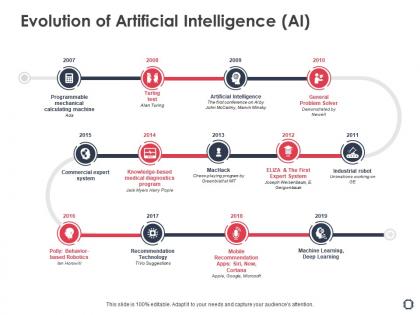
In both professional and educational settings, the ability to communicate complex ideas visually has become a critical skill. As information overload increases, presentations that effectively combine clear visuals with concise messaging stand out. This is why AI presentation makers have seen such rapid adoption—they help non-designers create professional-quality visual content that would previously have required specialized design skills.
Core Features to Evaluate in AI Presentation Makers
When I evaluate AI presentation tools, I look at several critical capabilities that determine how effectively they'll serve different users' needs. Understanding these key features helps in making an informed decision about which platform best suits your specific requirements.
AI-powered Content Generation
The quality of AI-generated content varies significantly between platforms. Some tools excel at creating complete presentation outlines from simple prompts, while others are better at enhancing existing content with suggestions. When testing AI tools for presentation and slideshow content, I pay particular attention to:
- Prompt effectiveness - how well the AI interprets vague instructions
- Content accuracy - especially for technical or specialized topics
- Tone consistency - maintaining voice throughout the presentation
- Structural coherence - logical flow between slides and sections
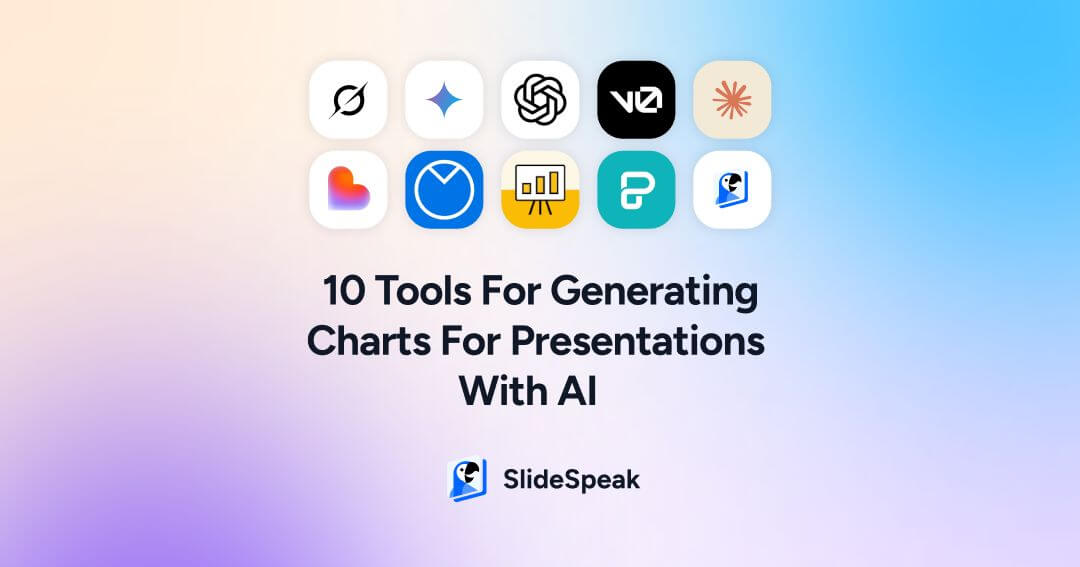
Visual Design Automation
Design automation capabilities determine how much manual styling work you'll need to do. The best platforms offer:
- High-quality template libraries with diverse design styles
- Intelligent layout suggestions based on content type
- Automatic color scheme and typography coordination
- Smart resizing and arrangement of visual elements
Customization vs. Automation Balance
Different platforms strike different balances between automation and user control:
Comparison of automation capabilities vs. customization flexibility across major AI presentation platforms
Integration Capabilities
The ability to integrate with external data sources, media libraries, and other tools in your workflow can significantly impact productivity. Look for platforms that connect with:
- Data visualization tools
- Stock image and video libraries
- Cloud storage services
- CRM and analytics platforms
Collaboration Features
For team environments, robust collaboration capabilities are essential:
- Real-time co-editing
- Comment and feedback systems
- Version history and change tracking
- Role-based access controls
- Presentation sharing options
Learning Curve and User Experience
The ideal AI presentation maker balances powerful features with intuitive usability. When evaluating AI presentation makers, I consider:
- Initial onboarding experience and tutorial quality
- Intuitiveness of the interface for non-designers
- Availability of templates to accelerate the learning process
- Progressive disclosure of advanced features
- Quality of help documentation and support resources
Top AI Presentation Platforms Analyzed
After extensive testing, I've identified the standout AI presentation platforms across different categories. Each offers unique strengths that make them suitable for specific use cases and user preferences.
Premium All-in-One Solutions
Visme (4.6/5 on G2)
Visme offers comprehensive visual design capabilities with increasingly sophisticated AI-driven content suggestions. Its strength lies in the breadth of design options and the ability to create various visual assets beyond just presentations.
- Excellent for brand consistency across multiple content types
- Strong data visualization capabilities
- Extensive template library with over 1,000 options
- Relatively steeper learning curve for advanced features
Beautiful.ai
Beautiful.ai pioneered the concept of "smart slides" that automatically format themselves as you add content. This approach dramatically reduces the time spent on layout adjustments.
- Exceptional automatic formatting capabilities
- Clean, modern aesthetic across all templates
- Time-saving "smart" elements that adjust automatically
- More limited customization compared to some competitors
Canva with Magic Design
Canva's introduction of Magic Design has added powerful AI capabilities to its already user-friendly platform. It excels at making design accessible to complete beginners.
- Most intuitive interface for non-designers
- Massive template and element library
- Growing AI capabilities with Magic Design and Magic Write
- Less specialized for presentations than some competitors
PageOn.ai
PageOn.ai takes a unique conversation-driven approach to presentation creation, allowing users to describe their needs conversationally while the AI handles both content and design elements.
- Superior integration of visual assets with narrative content
- Natural language interface reduces learning curve
- Strong at transforming complex ideas into clear visual narratives
- Adaptive templates that evolve based on content type
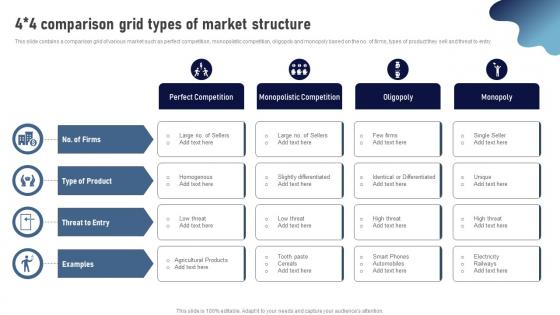
Specialized AI Presentation Tools
Feature Comparison of Specialized Tools
Radar chart comparing key capabilities across specialized AI presentation tools
Gamma
Gamma excels at content generation with particularly strong narrative capabilities. It's designed to help users tell compelling stories through their presentations.
- Superior AI content generation quality
- Strong narrative structure assistance
- Good balance of design and content focus
- Web-first presentation format
Tome
Tome takes a story-first approach to presentations with integrated AI image generation. It's particularly well-suited for narrative-heavy presentations.
- Excellent for storytelling presentations
- Integrated AI image generation
- Clean, modern aesthetic
- More limited data visualization options
SlidesAI
SlidesAI focuses specifically on enhancing PowerPoint and Google Slides with AI-generated content, making it ideal for users who prefer to stay within familiar environments.
- Seamless integration with PowerPoint/Google Slides
- Converts documents to presentations
- Lower learning curve for PowerPoint users
- Limited standalone capabilities
Plus
Plus stands out for its integration of multiple AI image models, allowing users to create diverse visual styles within their presentations.
- Multiple AI model integration (DALL-E 3, Imagen 3, etc.)
- Strong visual customization options
- Good for visually-driven presentations
- Content generation features less robust than some competitors
Feature Comparison Matrix
| Platform | AI Content Generation | Design Automation | Image Generation | Collaboration | Export Options |
|---|---|---|---|---|---|
| PageOn.ai | Excellent | Excellent | Excellent | Good | Multiple formats |
| Visme | Good | Excellent | Limited | Excellent | Comprehensive |
| Beautiful.ai | Good | Excellent | Limited | Good | Standard |
| Canva | Good | Very Good | Good | Excellent | Comprehensive |
| Gamma | Excellent | Good | Good | Very Good | Limited |
| Tome | Excellent | Very Good | Excellent | Good | Limited |
| SlidesAI | Very Good | Limited | Limited | Good | Excellent |
| Plus | Good | Very Good | Excellent | Good | Good |
Price-to-Value Assessment
Understanding the true value proposition of each AI presentation maker requires looking beyond the sticker price to consider what you're actually getting for your investment. I've analyzed the pricing structures across the market to help you make an informed decision.
Monthly Pricing Comparison (Mid-Tier Plans)
Monthly pricing comparison for mid-tier plans across major AI presentation platforms
Free Tier Offerings and Limitations
Most AI presentation makers offer free tiers, but they come with significant limitations:
| Platform | Free Tier Available | Key Limitations |
|---|---|---|
| PageOn.ai | Yes | Limited exports, watermarked content |
| Visme | Yes | Limited downloads, Visme branding, limited storage |
| Beautiful.ai | Yes | Limited presentations, no privacy controls, branded exports |
| Canva | Yes | Limited templates, limited Magic Design features |
| Gamma | Yes | Limited exports, public presentations only |
| Tome | Yes | Limited AI features, public presentations only |
| SlidesAI | Yes | Limited slides per month, basic features only |
| Plus | Yes | Limited AI image generation, basic templates only |
Enterprise Solutions and Scalability
For larger organizations, enterprise-grade features become crucial considerations:
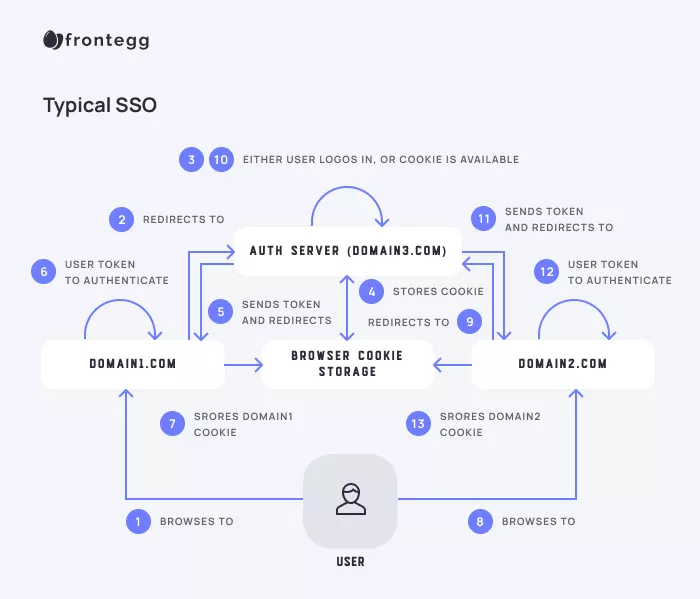
When evaluating enterprise solutions, I look for:
- Single sign-on (SSO) integration
- Advanced admin controls and user management
- Enhanced security features and compliance certifications
- Custom branding and template controls
- Dedicated support and account management
- Volume-based pricing discounts
Hidden Costs and Add-on Features
Be aware of these potential hidden costs when evaluating platforms:
- Per-user pricing that scales rapidly with team size
- Storage limits requiring upgrades for media-heavy presentations
- Export restrictions limiting format options
- Premium templates or elements requiring additional payment
- AI usage limits or credits that require additional purchases
- Integration fees for connecting with other business tools
Long-term Value Considerations
When making your final decision, consider these long-term value factors:
- Development pace and frequency of new feature releases
- Quality of AI models and their improvement over time
- Compatibility with evolving file formats and platforms
- Community and learning resources available
- Company stability and funding status
- Total cost of ownership including training and implementation
Use-Case Specific Recommendations
Different presentation scenarios demand different tools. I've analyzed how these AI presentation makers perform across various common use cases to help you find the perfect match for your specific needs.
For Educational Institutions
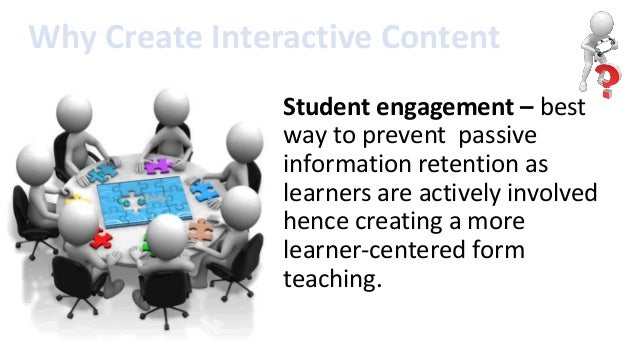
Educational institutions have unique needs when it comes to presentation tools. When evaluating AI lesson presentation makers, focus on these key aspects:
Best Platforms
- Canva (excellent education plans)
- PageOn.ai (strong interactive elements)
- Prezi (engaging animation options)
- Visme (comprehensive visual tools)
Privacy Considerations
- FERPA compliance features
- Student data protection controls
- Secure sharing options
- Content ownership guarantees
Interactive Learning
- Quiz and poll integration
- Student response systems
- Embedded video capabilities
- Collaborative annotation tools
For educational contexts, look for platforms offering educational discounts or specific education plans. Tools like PageOn.ai and Canva offer specialized templates designed specifically for learning environments, while Visme provides excellent data visualization options for academic content.
For Marketing Teams
Marketing Presentation Workflow
Efficient workflow for marketing teams creating presentations:
flowchart TD
A[Brand Strategy] --> B[Content Planning]
B --> C{Content Type?}
C -->|Product Launch| D[Feature Highlights]
C -->|Campaign Results| E[Data Visualization]
C -->|Brand Story| F[Narrative Elements]
D --> G[AI Visual Generation]
E --> G
F --> G
G --> H[Brand Consistency Check]
H --> I[Stakeholder Review]
I -->|Revisions Needed| G
I -->|Approved| J[Multi-Format Export]
J --> K[Distribution Channels]
classDef orange fill:#FF8000,color:white;
class G,H orange;
Marketing presentation workflow highlighting AI-assisted steps in orange
Marketing teams have specific requirements focused on brand consistency and visual impact. The best platforms for marketing presentations include:
Brand Consistency Features
Look for platforms with strong brand management capabilities:
- Brand kit functionality with color palette management
- Font management and consistency controls
- Template locking for critical brand elements
- Asset libraries for approved imagery
- Style guides integration
Data Visualization Excellence
For data-driven marketing presentations, prioritize:
- Advanced chart and graph options
- Live data integration capabilities
- Interactive data elements
- Comparison visualization tools
- AI-suggested insights from data
For marketing teams, I particularly recommend AI PowerPoint tools like PageOn.ai and Beautiful.ai, which offer strong brand management features while providing the flexibility to create variants for different audience segments. Visme and Canva also excel for marketing teams with their extensive template libraries and strong visual design capabilities.
For Individual Professionals
Learning Curve vs. Output Quality for Individual Users
Comparison of learning curve vs. output quality for individual users across platforms
For individual professionals looking to create AI online presentations quickly and effectively, these considerations are paramount:
Quick Creation
For rapid presentation creation, PageOn.ai and Canva stand out with their intuitive interfaces and AI-powered content generation. Both allow you to go from concept to complete presentation in under 30 minutes.
Learning Curve
Canva offers the gentlest learning curve for complete beginners, while PageOn.ai's conversational approach makes it extremely accessible. Visme and Beautiful.ai require slightly more time to master but offer more advanced capabilities.
Cost-Effectiveness
For individual professionals, SlidesAI offers excellent value as an add-on to existing tools. Canva's free tier is surprisingly capable, while PageOn.ai and Tome offer strong free options for getting started.
Future-Proofing Your AI Presentation Strategy
As AI presentation technology continues to evolve rapidly, making strategic choices today can save you from costly platform migrations in the future. Here's my analysis of emerging trends and how to position yourself for ongoing success.
Emerging Trends in AI Presentation Technology
Key developments shaping the future of presentation tools:
flowchart TD
A[Current State] --> B[Near Future
2025-2026]
B --> C[Medium Term
2027-2028]
C --> D[Long Term
2029+]
B1[Multimodal AI
Understanding text, images, and voice] --> B
B2[Audience Analytics
Real-time feedback integration] --> B
B3[Enhanced Personalization
Dynamic content adaptation] --> B
C1[Immersive Presentations
AR/VR integration] --> C
C2[Autonomous Design Systems
Full presentation generation] --> C
C3[Emotional Intelligence
Sentiment-aware content] --> C
D1[Neural Interface Integration
Thought-to-presentation] --> D
D2[Holographic Presentations
Spatial computing integration] --> D
D3[Ambient Intelligence
Context-aware presentations] --> D
Timeline of emerging AI presentation technologies and capabilities
Evaluating Innovation Potential
When assessing which platforms are likely to continue innovating, I look for these key indicators:
- Frequency and quality of feature updates over the past 12 months
- Investment in AI research and development teams
- Strategic partnerships with AI technology providers
- API ecosystem and developer community engagement
- Transparent product roadmap and vision statements
Innovation Index of AI Presentation Platforms
Innovation index based on feature development pace, R&D investment, and technology adoption
Building AI-Leveraged Presentation Workflows
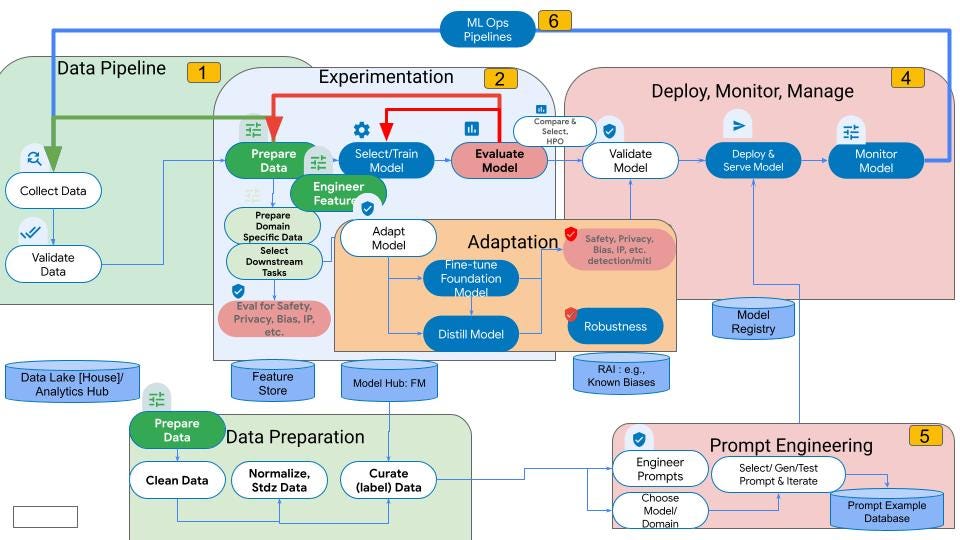
To maximize the benefits of AI presentation tools while maintaining quality control, I recommend this balanced workflow approach:
- Strategic Planning (Human-Led): Define objectives, audience, and key messages before engaging AI
- Content Generation (AI-Assisted): Use AI to generate initial content drafts and suggest structures
- Visual Design (AI-Generated, Human-Refined): Let AI create visual designs, then refine for brand alignment
- Data Visualization (Collaborative): Use AI to suggest visualization types, but verify accuracy
- Narrative Enhancement (Human Touch): Add personal stories and authentic voice that AI can't replicate
- Review and Refinement (Human Quality Control): Always perform a final human review for accuracy and tone
Human vs. AI: Finding the Right Balance
Understanding when to rely on AI and when to apply human expertise is crucial for creating truly effective presentations:
When to Use AI
- Initial content drafting and outlining
- Generating multiple design variations quickly
- Creating basic data visualizations
- Suggesting presentation structures
- Translating content for international audiences
- Formatting and layout optimization
- Generating supporting visuals and icons
When to Apply Human Expertise
- Strategic messaging and positioning
- Emotional storytelling and authentic voice
- Nuanced industry-specific content
- Final fact-checking and accuracy verification
- Brand voice and tone alignment
- Complex data interpretation
- Cultural sensitivity and localization
PageOn.ai's Agentic Approach
PageOn.ai stands out with its agentic approach to presentation creation, which transforms complex ideas into visual narratives through:
- Conversational interface that captures your intent naturally
- Multi-step reasoning that breaks down complex topics into digestible visual components
- Adaptive templates that evolve based on content requirements
- Intelligent visual asset selection that reinforces key messages
- Narrative flow optimization that ensures logical progression
This agentic approach represents the future direction of AI presentation tools—moving beyond simple automation to become true collaborative partners in the creative process. By understanding context and intent, PageOn.ai helps bridge the gap between raw information and compelling visual communication.
Decision Framework for Selecting Your Ideal AI Presentation Maker
Finding the right AI presentation tool requires a structured approach. I've developed this step-by-step framework to guide you through the evaluation process based on your specific needs.
Decision Process Flow
Follow this process to select the ideal AI presentation tool for your needs:
flowchart TD
A[Start Evaluation] --> B{Primary Use Case?}
B -->|Educational| C[Privacy & Interactivity Focus]
B -->|Marketing| D[Brand & Visual Focus]
B -->|Business/Professional| E[Content & Integration Focus]
C --> F{Budget Constraints?}
D --> F
E --> F
F -->|Minimal Budget| G[Evaluate Free Tiers]
F -->|Moderate Budget| H[Compare Mid-Tier Plans]
F -->|Enterprise Budget| I[Assess Enterprise Features]
G --> J{Technical Expertise?}
H --> J
I --> J
J -->|Limited| K[Prioritize Ease-of-Use]
J -->|Moderate| L[Balance Features & Usability]
J -->|Advanced| M[Focus on Customization]
K --> N[Run Practical Tests]
L --> N
M --> N
N --> O{Results Satisfactory?}
O -->|Yes| P[Implement & Train Team]
O -->|No| Q[Refine Requirements]
Q --> B
style A fill:#FF8000,color:white
style P fill:#66BB6A,color:white
Step-by-step decision framework for selecting an AI presentation platform
Key Questions to Ask Before Committing
Content and Design Questions
- How well does the AI understand my industry terminology?
- Can I easily import existing brand guidelines?
- How customizable are the AI-generated designs?
- What types of data visualizations are supported?
- How easily can I edit AI-generated content?
- Does the platform support my required output formats?
Technical and Business Questions
- How does the platform handle my data privacy?
- What happens to my content if I cancel my subscription?
- How reliable is the platform (uptime guarantees)?
- What level of customer support is available?
- How frequently are new features added?
- Are there usage limits on AI features?
Effective Trial Strategy
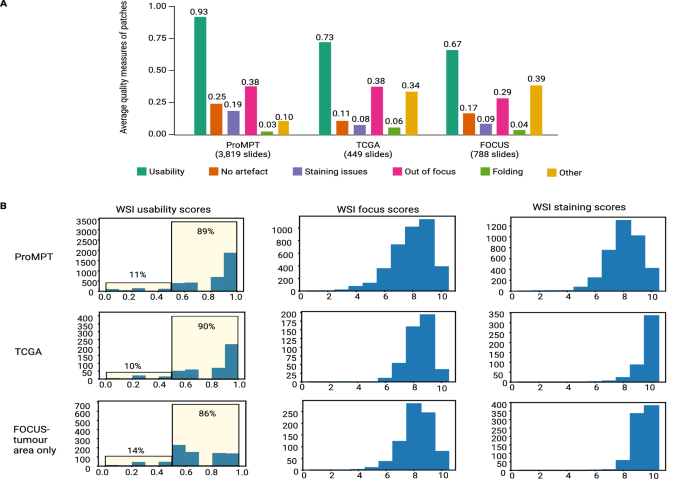
To get the most out of free trials and make an informed decision:
- Prepare a Test Case: Select a real presentation you need to create as your benchmark
- Document Your Process: Track time spent, obstacles encountered, and quality of outputs
- Test Core Features: Focus on the capabilities most important to your specific needs
- Evaluate AI Understanding: Test how well the AI interprets your specific industry terminology
- Try Edge Cases: Test unusual requirements that might reveal limitations
- Assess Export Quality: Check how presentations perform when exported to your required formats
- Get Team Feedback: If others will use the tool, include them in the evaluation
Transitioning from Traditional to AI-Assisted Creation
When moving from traditional tools like PowerPoint to AI-assisted platforms, consider this phased approach:
Transition Timeline
timeline
title Transition to AI-Assisted Presentation Creation
section Preparation
Audit existing presentations : Identify reusable assets
Document brand guidelines : Ensure consistent implementation
Set quality benchmarks : Define success metrics
section Initial Implementation
Small pilot project : Test with non-critical presentation
Team training : Core feature workshops
Process documentation : Create new workflows
section Scaled Adoption
Template migration : Convert key templates
Parallel workflows : Support both methods
Success measurement : Track time savings
section Full Integration
Advanced feature adoption : Master all capabilities
Workflow optimization : Refine processes
Content library development : Build reusable assets
Phased approach to transitioning from traditional to AI-assisted presentation creation
Creating a Balanced Ecosystem
For many organizations, the ideal solution isn't a single platform but a thoughtfully integrated ecosystem of tools:
Core AI Platform
Select one primary AI presentation platform that aligns with your most common use cases. For many organizations, PageOn.ai's versatility makes it an excellent core platform with its balance of automation and customization.
Specialized Tools
Supplement your core platform with specialized tools for specific needs. For example, SlidesAI for PowerPoint enhancement, Tome for narrative presentations, or Visme for advanced data visualization.
Integration Strategy
Develop clear guidelines for when to use each tool and how content flows between them. Consider using shared cloud storage, consistent naming conventions, and centralized asset management.
Transform Your Visual Expressions with PageOn.ai
After comparing all the leading AI presentation makers, PageOn.ai stands out with its conversation-driven approach that makes it exceptionally easy to transform complex ideas into clear, compelling visual narratives. Whether you're creating educational content, marketing presentations, or professional reports, PageOn.ai's intuitive interface and powerful AI capabilities help you communicate more effectively with less effort.
Final Thoughts
The AI presentation landscape is evolving rapidly, with tools becoming increasingly sophisticated in their ability to transform ideas into visual content. As I've explored in this comparison, each platform offers unique strengths that make them suitable for different use cases and user preferences.
What's clear is that we're moving beyond simple template-based tools to intelligent platforms that can truly understand content and context. PageOn.ai's conversational, agentic approach represents the cutting edge of this evolution—focusing not just on automating design tasks but on fundamentally improving how we communicate complex ideas visually.
As you evaluate these tools for your specific needs, remember that the most powerful approach is often to start with a clear understanding of your communication goals and audience needs. The best AI presentation maker is ultimately the one that helps you connect most effectively with your audience while saving you valuable time in the process.
You Might Also Like
Transforming Industries with Language Models: From Summarization to Question Answering
Explore practical applications of language models from text summarization to question answering systems. Learn how LLMs are transforming healthcare, finance, e-commerce and more with PageOn.ai.
Mastering Live Product Demonstrations in Investor Meetings | Captivating Presentation Guide
Learn how to create powerful live product demonstrations that captivate investors, showcase your product's value, and help secure funding through strategic visual storytelling techniques.
Optimizing AI Model Costs: Balancing Performance with Resource Requirements
Discover practical strategies for AI model cost optimization while maintaining high performance. Visual frameworks for balancing computational efficiency with powerful AI capabilities.
Strategic Icon Selection Guide: Achieving Visual Consistency in Design Systems
Learn how to create visual harmony through intentional icon systems. Our comprehensive guide covers selection criteria, styling guidelines, and implementation strategies for cohesive design.